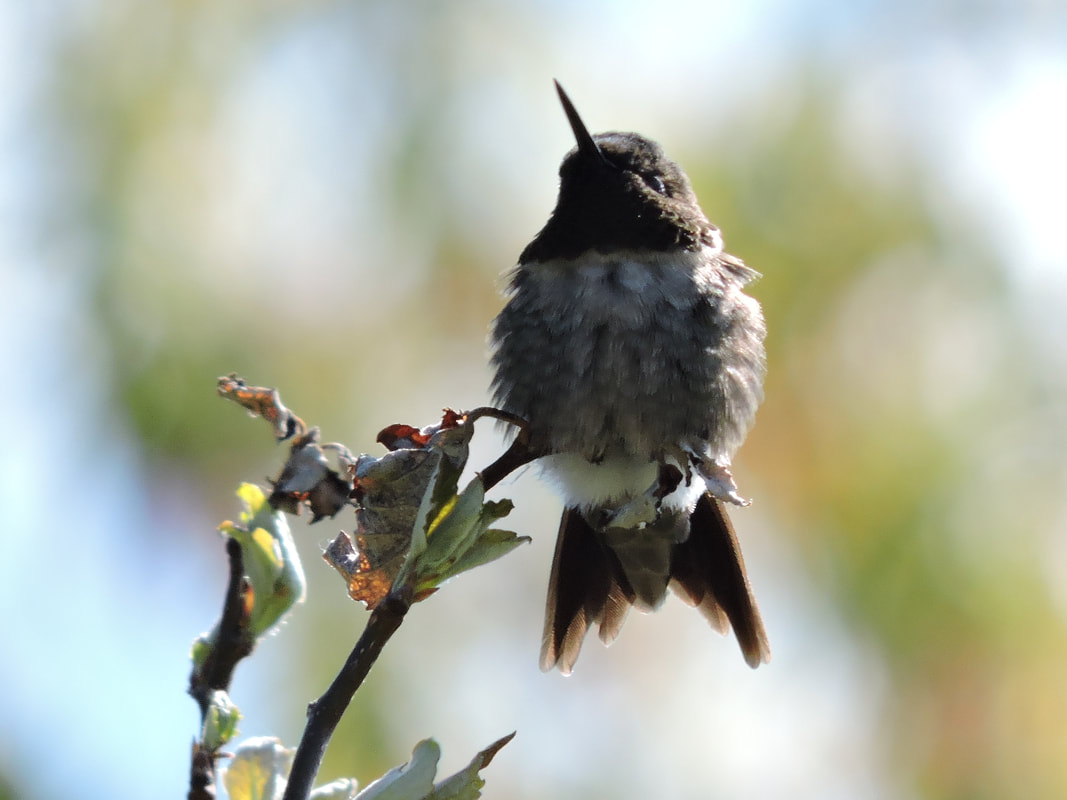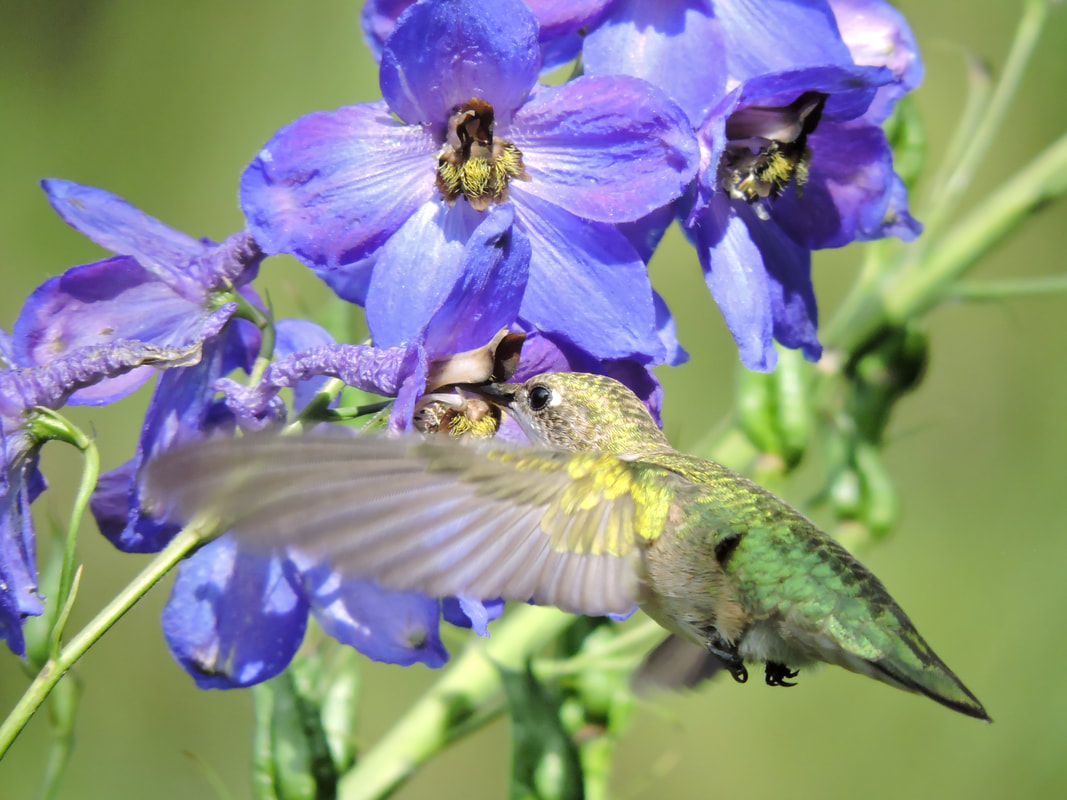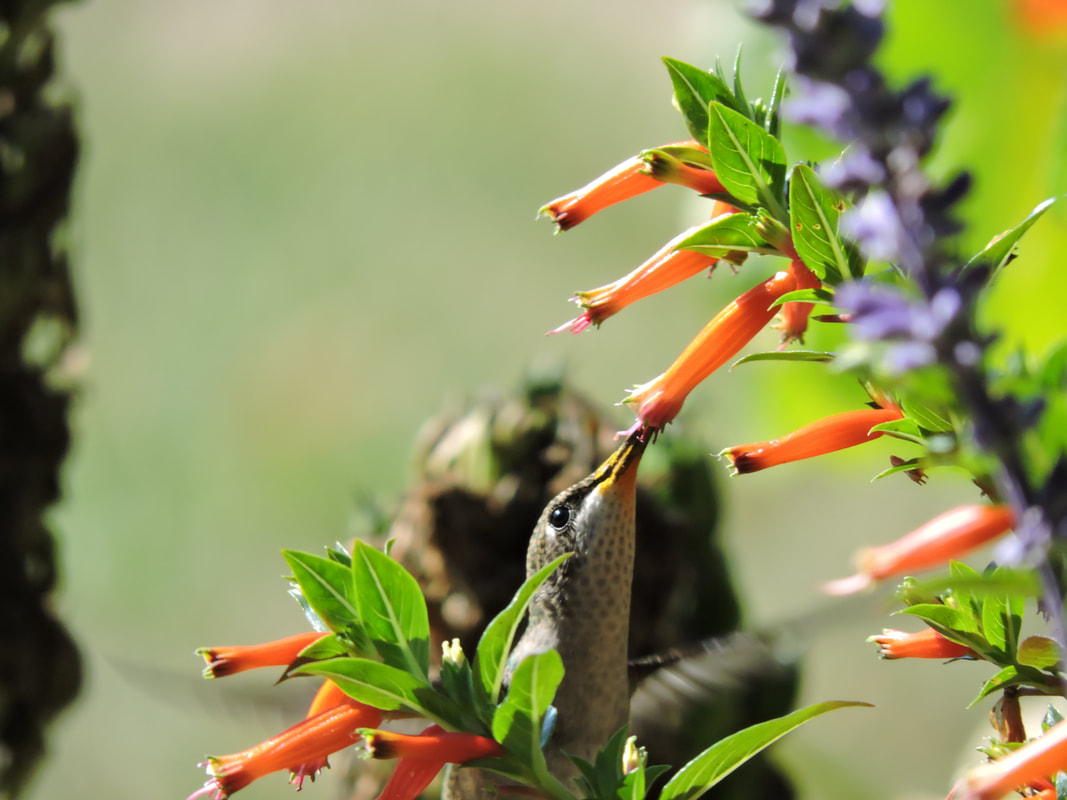Humming Blog |
 It's perhaps a little bit early in our region to be buying annuals and perennials for the upcoming season, but Spring was definitely in the air. Even as I sit here writing, Canada geese are passing by my window. Just a couple days ago we checked out a nursery in the country for some new ideas. We arrived and opened the car doors, and geese were calling everywhere. It's that sound that just gets me excited for the new season. You could smell the melting snow, the sun was shining brightly and Spring was everywhere. There's so much to look forward to this time of year, and even though some of the drifts in our yard are still 3 to 4 ft high, the Sun is pushing it away fast. The next two months will be a birder's paradise. One new bird after another will show up, gardens will start to color up and every bird will sing their song. It's a time of new life, new experiences and new beginnings. It's a time to appreciate all of creation and it's wonders, and none of it should be taken for granted. Use your time wisely over the next two months to truly soak up all the beauty that is provided throughout nature. Smell the Spring air, listen carefully to every bird and it's song and watch life literally exploding around you. Although I'm a serious hummingbirder, it's never been just about the hummingbirds, but the process that leads up to them that makes the experience unforgettable. This is an image from last Spring. His name is Top Gun, and we slightly shortened it to Gunner. Our hopes are that he'll return and take full advantage of our garden for another season. This image was taken around May 20th of 2021, Northeast of Edmonton, Alberta, Canada.
0 Comments
 The magic doesn't just happen at some point in summer without a large amount of planning well before. Sure, you can limit yourself to a simple setup and be somewhat successful, but to become a serious hummingbirder, trust me, it doesn't start with just hanging a feeder and hoping for great results. Hummingbirds are territorial birds, so they will find a location that meets all their needs before they call it home. If your garden, with limited food sources, is a long distance away from their territory, it'll benefit them in no way to expend an enormous amount of energy traveling to that limited source of food, to gain less than what is needed to travel back. Make it worth their while! I know there are many others out there that start their indoor planting months before the hummingbirds arrive. We plant enough to create a smorgasbord of nectar that spans from one end of our garden to the other. We have about 25 large garden pots that get stuffed with annuals. This also doesn't include the thousands of perennials in our garden that each have their own blooming season throughout summer. To fill 25 large garden pots it can definitely be costly, so there are solutions to reduce that cost, but also to enjoy the process. We start indoor planting in January with a variety of proven annuals that are not only hardy but also great hummingbird attractors. Many plants require 12 to 16 weeks indoors before moving outdoors. Many plants can be directly seeded, and there are a few great choices that can fill many locations with just direct seeding. Scarlet runners and vining nasturtiums are two annuals that I heavily rely on and plant in several locations around the garden just from seed. They don't need as much growing time before they start to flower as the others that are started indoors well before the season. It can be 3 to 4 months indoors and then 3 to 4 months outdoors worth of effort in my region of the continent to develop a garden that's guaranteed to attract the hummingbirds. All I can say is spend some extra time developing extra sources of food, make sure you have numerous feeders hanging throughout the garden, enjoy the process, and you'll soon realize that the extra effort will pay off far more than just hanging a feeder and hoping for great results. Think like a hummingbird, if that's possible, and imagine the possibilities throughout your garden that would make you want to stick around and return to that special place. This young hummingbird from last Fall spent half the time feeding from these Delphiniums, and spent the other half of its time defending them from other hummingbirds. August 2021, N.E. of Edmonton, Alberta, Canada.  The Ruby throats are well on their way, some that have made this journey several times before, and some trying to remember the path from last autumn when they attempted their first journey South. Every bird now moving North is considered a mature bird and able to breed. Most of us are hoping to see familiar friends from previous years, but the youngest generation of hummingbirds have yet to experience what life has to offer on their first ever journey North. Those first timers are now considered adults, and will have battles ahead of them. The females will have different types of battles, as less competition is required for them. They just need to learn the ins and outs of nesting, in choosing the right location, and how to build a nest that's structurally sound enough to endure the winds and storms, and defend their precious young. The young males will compete for territory that looks enticing. Some will win and some will be forced to look elsewhere. The mature birds are likely to return to a location that previously provided success, while the newest generation are looking for reasons to find a new home for Summer, and Summers to follow. This is where we come into play. All hummingbirds know what feeders are this time of year. They understand that they're an endless source of nectar. Flowers, especially their favorites, will always trigger their instincts and keep them returning time and again. It's absolutely necessary to have feeders up in Spring though, and always necessary to have flowers for when the young arrive after leaving the nest. Flowers always attract the Young, and keep them around until they can figure out the feeders. Feeders provide a source of food that is never ending. If storms hit, if snow falls and does damage to the flowers, feeders will always remain constant. They learn, like every living thing, when food is available, you take advantage of it. Food is survival, and if we give them every option imaginable, you'll give them absolutely no reason to go elsewhere. Provide several feeders, clusters of flowers, water sources, and simply sit back and wait for the surprises of Spring. This is a young Ruby throat from last August. It loved the Vermillionaire, but the evidence all over its chin let us know that it was making good use of the Nasturtiums. |
Archives
June 2024
Categories
All
|
 RSS Feed
RSS Feed
